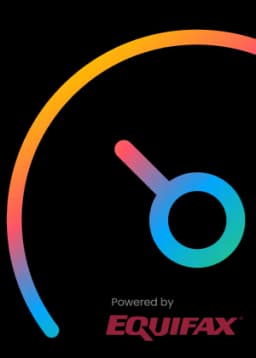When it comes to managing your money, understanding the difference between financial tools is important. Among the most commonly used are lines of credit and credit cards, both of which offer unique features to fit various needs. While they may seem similar, their functionality, costs, and ideal usage are different.
Choosing between a line of credit and a credit card depends largely on your financial goals and spending habits. It also depends on your credit score and current financial standing. By understanding the key distinctions, you can make the best decision for you.
Let’s dive into the specifics of each option to help you determine which form of credit best suits your needs. Whether it’s a line of credit, a credit card or a short-term loan through an alternative lender, understanding the key differences can give you more control over managing your finances effectively.

What is a Line of Credit?
A line of credit is a flexible loan provided by a bank or financial institution. Similar to a credit card, it provides a borrower with a set amount of money that can be used as needed, paid back, and then borrowed again in a revolving cycle.
However, unlike a credit card, a line of credit usually offers a lower interest rate and a higher credit limit. Keep in mind that you only pay interest on the amount you draw, not the entire credit limit. This can be especially helpful for covering variable expenses, such as home renovation costs, or financial emergencies, like replacing a broken air conditioner.
Types of Credit Lines
Understanding the types of credit lines available can help you determine if this financial tool suits your needs. Whether it’s for managing unexpected expenses or providing a financial safety net, here are the different lines of credit you can consider.
Personal Line of Credit
A personal line of credit is typically unsecured and based on your creditworthiness and income. It offers flexibility because you can use the funds for a variety of purposes such as home improvements, debt consolidation, or unexpected expenses.
The interest rates for personal lines of credit are generally variable, meaning they can fluctuate over time. They are typically lower than credit card rates but may be higher than those of secured lines of credit. To qualify, lenders often require a good to excellent credit score. Some lenders may even look at your debt-to-income ratio before approving your personal line of credit.
Business Line of Credit
Designed for business use, this line of credit helps manage cash flow and fund operations or expansion. Typically unsecured with variable interest rates, it functions like a personal line of credit. However, businesses may need to offer collateral or a personal guarantee for approval.
Businesses use lines of credit to cover everyday expenses, buy inventory, and pay for new equipment. The application process usually involves providing documentation i.e. financial statements, business plans, and tax returns. Approval can take weeks or even months, depending on how complicated the application is and what the lender needs from you.
Home Equity Line of Credit (HELOC)
A HELOC allows homeowners to borrow against the equity of their home. The home serves as collateral, which typically results in a lower interest rate. The amount you can borrow is based on the difference between the value of your home and the balance of your mortgage.
A home equity line of credit lets you borrow during a specific time, called the draw period. After that, you enter the repayment period, where you have to pay back what you borrowed plus interest. The interest may be tax-deductible, but only if the funds are used for home renovations or improvements.
What is a Credit Card?
A credit card is a financial tool issued by banks or credit unions that allows you to borrow funds for purchases or cash advances, up to a certain limit. The borrowed amount must be repaid with interest if not paid off in full by the due date.
Credit cards offer convenience and the ability to build credit history, but come with high interest rates if balances are carried over. Many credit cards come with rewards programs, such as cashback or points for every dollar spent. They also come with features such as fraud protection, and some come with travel insurance.
Responsible use will help you avoid debt accumulation. It’s essential to make timely payments and keep balances low compared to credit limits. Using a credit card can help you rebuild your credit by demonstrating responsible borrowing and payment behaviour.
Types of Credit Cards
Standard credit cards: Used for everyday purchases. They usually come with a set credit limit based on creditworthiness.
Rewards credit cards: Offer rewards for spending, such as cashback or points that can be redeemed for travel or other perks.
Balance transfer cards: Allow for the transfer of existing credit card balances to a new card with a lower interest rate or promotional period.
Secured credit cards: Designed for those with limited or poor credit history. They require a security deposit that acts as collateral, which typically determines your credit limit.
Line of Credit: Pros and Cons
If you’re considering a line of credit, weigh the pros and cons. It offers flexible access to funds, often with lower interest rates. However, it can also require strong financial discipline to manage effectively.
Pros
Flexibility in borrowing and repayment: Allow borrowers to access funds as needed, making them ideal for financial emergencies or projects with fluctuating costs.
Lower interest rates: Typically come with lower interest rates than credit cards. It can be a more cost-effective form of borrowing for some.
Higher borrowing limits: Borrowers can access a more significant amount of money compared to credit cards.
Cons
Potential for high fees: May come with fees, such as annual fees or transaction fees. This can add up over time and make it more costly.
Requires discipline to manage effectively: Since lines of credit offer flexible access to funds, it can be tempting to overspend and carry a balance for an extended period.
Possible collateral requirement (for secured lines): A secured line of credit may require collateral, such as a home or other valuable assets. This can be risky if the borrower is unable to make payments.
Credit Card: Pros and Cons
If you’re new to credit or looking for a convenient way to make purchases, you may be considering a credit card. Like a line of credit, there are pros and cons to using them.
Pros
Useful for everyday purchases: Credit cards are widely accepted, making them a handy option for purchases like groceries, gas, etc. They eliminate the need to carry cash or face bank charges for multiple debit
purchases.
Rewards and benefits: Many offer rewards programs, such as cashback or travel points. This can save you money on purchases you would make anyway.
Consumer protection and fraud coverage: Offer additional protection against fraud and unorganized transactions. Many credit card companies have zero-liability policies, meaning you won’t be held responsible for fraudulent purchases.
Cons
Higher interest rates: Credit cards come with higher interest rates, especially if the balance is not paid in full each month. This can add up quickly and make it challenging to pay off the balance over time.
Potential for debt accumulation: With easy access to credit, there is a risk of overspending and accumulating debt that can be difficult to pay off. It’s important to budget and use credit cards wisely.
Lower credit limits: Have lower credit limits compared to other forms of credit, such as personal loans or lines of credit. This can limit your purchasing power and make it difficult to make larger purchases.
When to Use a Line of Credit vs. a Credit Card
A line of credit is a flexible borrowing option that gives you access to funds up to a predetermined limit as needed. It’s useful for handling large, unpredictable expenses or emergencies. A credit card offers an easy way to make everyday purchases, often with added rewards or benefits.
Frequently Asked Questions About Line of Credit vs. Credit Card
Which has better interest rates?
A line of credit typically offers better interest rates compared to credit cards, making it a more cost-effective option for borrowing large amounts or for longer periods. However, credit card rewards and travel points might outweigh this benefit for some consumers.
Can I improve my credit score by using a line of credit?
Yes, properly managing either can help rebuild your credit over time. Making timely payments and keeping balances low can show responsible credit use and positively impact your overall credit rating. Staying consistent with these small steps can make a big impact over time.Is one easier to obtain than the other?
Credit cards are easier to qualify for than lines of credit. Lines of credit require a more rigorous application process, and lenders may only approve those with positive credit ratings. There are a variety of credit card options available for different needs, including for those with limited credit history.
The Bottom Line
Both credit cards and lines of credit offer valuable financial solutions, but cater to different needs and circumstances. While credit cards provide convenience and rewards, lines of credit offer flexibility and lower interest rates.
Before deciding on the best option, assess your financial situation and objectives to determine which option aligns best with your needs. By managing either option responsibly, you can improve your credit and maintain your financial health.
Of course, you can always explore additional forms of credit, including small loans, bad credit loans or temporary cash advances with an alternative lender. These are ideal if you’re looking for a quick and easy way to cover unplanned costs or daily essentials.
You are welcome to apply with iCash; we offer loans for all credit scores and income types. Apply for funding now and get up to $1,500 to use today!













